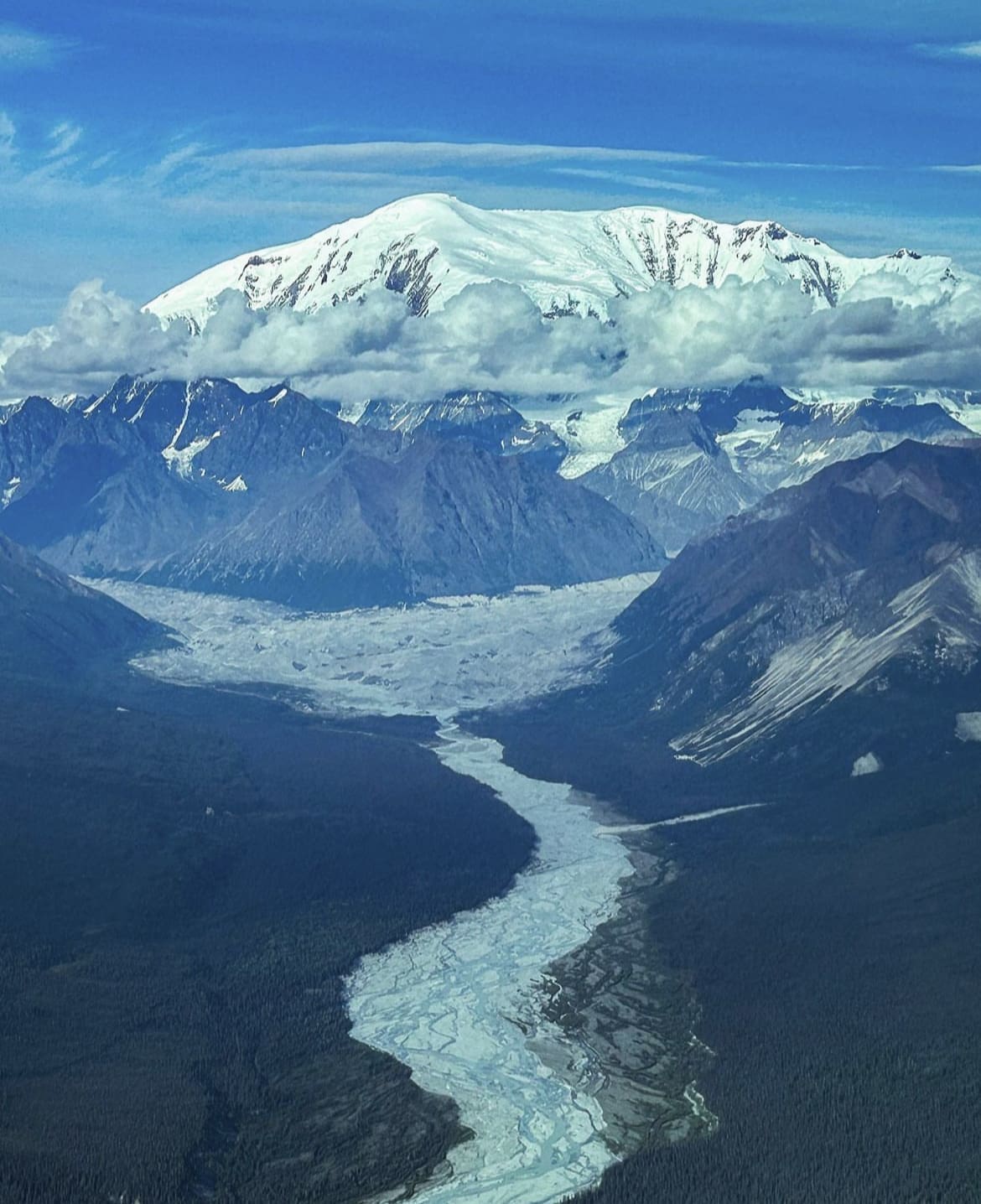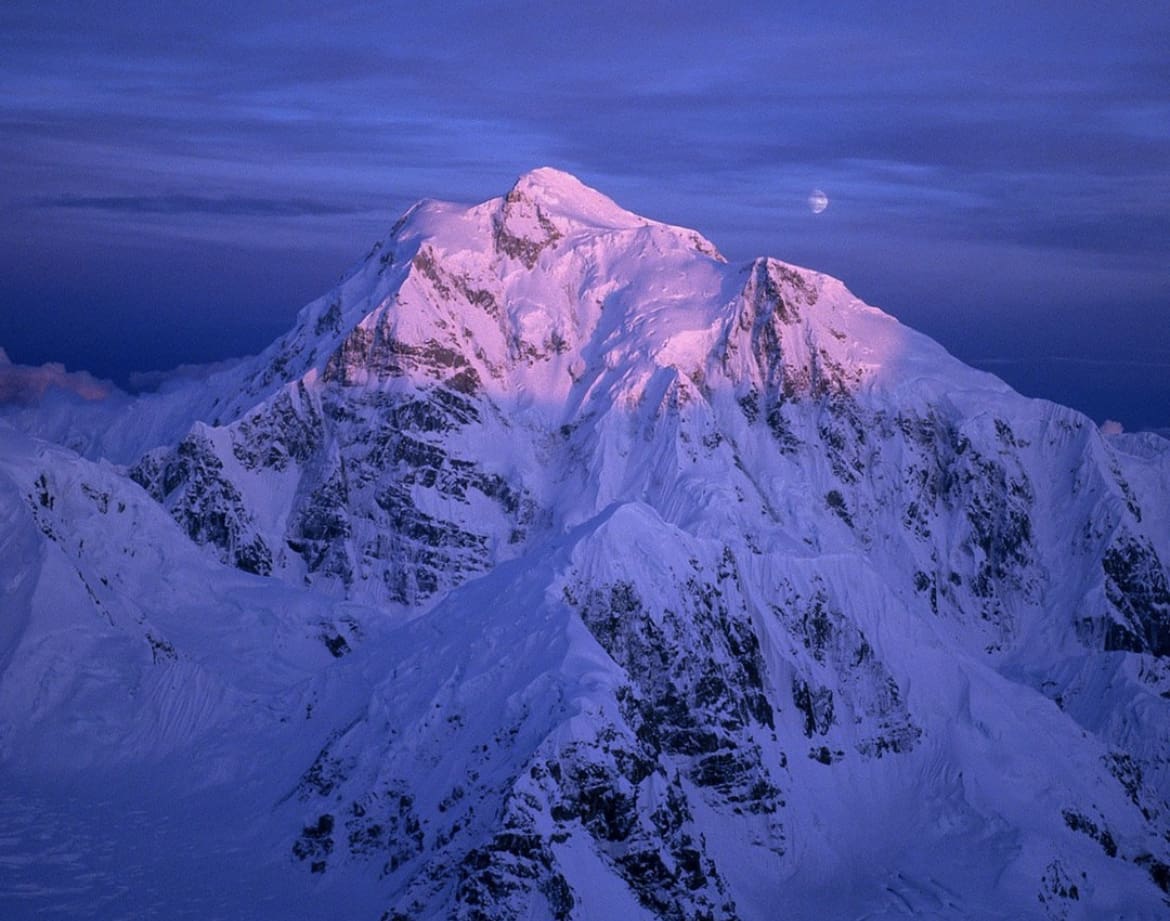[social_warfare]
From Denali to Mount Hunter: Exploring America’s Tallest Mountains
Ready to conquer some serious heights? The USA is home to some of the most epic peaks that will leave you breathless – both figuratively and literally.
Whether you’re an experienced mountaineer or just someone who dreams of high-altitude adventures, the tallest mountains in the USA offer a range of challenges and stunning views that are worth every step.
In this guide, we’re diving into the tallest mountains in the USA, dishing out all the juicy details you need to know before you hit those trails.
1. Denali (Mount McKinley), Alaska
Denali, the granddaddy of them all, towering at 20,310 feet, is the ultimate challenge for thrill-seekers. If you’re looking to push your limits, Denali is the place to do it.
Location and Accessibility: Denali is situated in the heart of Alaska, within Denali National Park and Preserve. To get there, you can fly into Anchorage and then either drive or take a train to Talkeetna. From Talkeetna, you’ll need a small plane to get to the base camp on the Kahiltna Glacier.
Practical Tips: The best time to visit Denali is from late May to early July when the weather is relatively stable. Remember, this is not a casual hike – it’s a serious climb that requires thorough preparation. Make sure you’re equipped for extreme weather conditions, and if it’s your first time tackling such heights, consider hiring a guide. There are plenty of reputable guiding companies that offer expeditions, ensuring you stay safe and make the most of your adventure.
Costing: Climbing permits for Denali are around $375. However, when you factor in the costs for gear, guides, and flights, you’re looking at a total expense of $8,000 to $10,000. It’s a hefty price tag, but for the experience of summiting North America’s highest peak, many say it’s worth every penny.

2. Mount Saint Elias, Alaska
Standing tall at 18,009 feet, Mount Saint Elias is a beast that straddles the border between Alaska and Canada. Known for its dramatic rise directly from sea level, this peak offers a unique challenge that draws climbers from around the world.
Location and Accessibility: To reach Mount Saint Elias, you’ll likely fly into Yakutat, Alaska. From there, the journey gets more rugged. Access to the mountain typically involves chartering a bush plane to land on one of the glaciers surrounding the peak. This remote location adds to the adventure, making the climb even more rewarding.
Practical Tips: Mount Saint Elias is ideal for experienced climbers. The best time to attempt this climb is during the summer months, from June to August, when the weather is less harsh. Be prepared for some serious glacial travel and potentially treacherous conditions. The climb itself is technically challenging, so ensure you’re well-versed in ice climbing and crevasse rescue techniques.
Costing: Given its remote location, climbing Mount Saint Elias can be pricey. A guided expedition can cost around $5,000 to $7,000, depending on the services included. This typically covers permits, guide fees, and the cost of the bush plane.

3. Mount Foraker, Alaska
Often overshadowed by its towering neighbor Denali, Mount Foraker offers a quieter yet equally impressive climb at 17,400 feet.
This colossal peak, located in Denali National Park, is a hidden gem for those seeking a less crowded adventure.
Location and Accessibility: Like Denali, Mount Foraker is situated in Denali National Park. To reach it, you’ll fly into Anchorage and then make your way to Talkeetna. From Talkeetna, a flight with a bush plane to the base camp on the Kahiltna Glacier is necessary.
Practical Tips: The best time to climb Mount Foraker is from late May to June when the weather is relatively stable. This peak is less traveled, meaning you’ll likely experience more solitude but also need to be prepared for self-sufficiency. The climb is challenging, with difficult weather and route-finding. Experience with glacier travel and high-altitude climbing is crucial.
Costing: Expect to spend around $4,000 to $6,000 for a guided climb, which includes permits, guide fees, and flights. Going unguided will reduce costs but requires significant experience and preparation.

4. Mount Bona, Alaska
At 16,550 feet, Mount Bona is the highest volcano in the USA, promising a unique climbing experience with stunning views and volcanic landscapes.
Location and Accessibility: Mount Bona is located in the Saint Elias Mountains of eastern Alaska. The usual route involves flying into Anchorage, then driving to McCarthy. From McCarthy, you’ll take a bush plane to the base camp on the Russell Glacier.
Practical Tips: The best time to climb Mount Bona is in May or June, when the weather conditions are favorable. Climbing Mount Bona is typically less technical than some other peaks but requires navigating glacial terrain. It’s essential to have proper gear for cold and potentially harsh weather conditions.
Costing: A guided expedition typically costs around $3,500 to $5,000, including permits, guide services, and bush plane flights. For those with experience, an unguided climb will be less expensive, but preparation is key.

5. Mount Blackburn, Alaska
Mount Blackburn, rising to 16,390 feet, is a lesser-known gem for mountaineers seeking a mix of solitude and challenge.
Its remote location in the Wrangell-St. Elias National Park adds an element of wilderness adventure that’s hard to match.
Location and Accessibility: To reach Mount Blackburn, you’ll fly into Anchorage and then make your way to McCarthy, a small town in the heart of the Wrangell-St. Elias National Park. From McCarthy, a bush plane will take you to the base camp on the Nabesna Glacier.
Practical Tips: June is the best time to climb Mount Blackburn, offering the most stable weather conditions. The climb involves significant glacier travel, so proficiency in glacier navigation and crevasse rescue is essential. While it’s less technical than some other Alaskan peaks, the remote location means climbers need to be self-sufficient and well-prepared for emergencies.
Costing: A guided climb will typically cost around $4,000, covering permits, guide services, and flights. For experienced climbers going unguided, costs can be significantly lower, but the trade-off is a higher level of personal risk and responsibility.

6. Mount Sanford, Alaska
A massive shield volcano, Mount Sanford stands at 16,237 feet, offering a dramatic and unique climbing experience. Known for its relatively smooth, broad profile, it’s a stark contrast to the sharp peaks of the Alaska Range.
Location and Accessibility: Mount Sanford is accessible via Glennallen, Alaska. From there, you’ll need to take a bush plane to a landing zone on the glacier. The logistics can be challenging, adding to the adventure.
Practical Tips: March to April is the best window for climbing Mount Sanford, providing the most favorable conditions. The climb itself is not overly technical but involves a long, steady ascent with significant exposure to the elements. Preparation for cold weather and potential storms is crucial.
Costing: Expect to spend around $4,000 to $5,000 for a guided expedition, including permits and bush plane flights. Going unguided will reduce costs, but make sure you have the necessary experience and equipment.

7. Mount Fairweather, Alaska/British Columbia
Mount Fairweather’s name is misleading – this 15,325-foot peak is notorious for its harsh weather conditions.
Straddling the border between Alaska and British Columbia, it offers an epic climb for those ready to brave its formidable environment.
Location and Accessibility: To access Mount Fairweather, you’ll typically fly into Gustavus, Alaska, which is the gateway to Glacier Bay National Park. From there, a bush plane or boat will take you closer to the mountain, but be prepared for a rugged approach.
Practical Tips: Climbing Mount Fairweather is best attempted in May or June when the weather is slightly more predictable. This mountain is not just tall but also technically challenging. Climbers need to be well-prepared for extreme weather, including heavy snowfall and strong winds. Experience in alpine and ice climbing is essential.
Costing: Guided expeditions can cost around $4,500 to $6,000, which covers permits, guide services, and transportation. If you decide to go unguided, costs will be lower, but ensure you have the necessary skills and equipment.

8. Mount Hubbard, Alaska/Yukon
This remote beauty reaches 14,951 feet and straddles the US-Canada border, offering a true wilderness adventure for climbers looking to escape the crowds.
Location and Accessibility: Reaching Mount Hubbard involves flying into Yakutat, Alaska, followed by a bush plane to the base camp on one of the glaciers surrounding the peak. This mountain’s remote location ensures a secluded and pristine climbing experience.
Practical Tips: The best time to climb Mount Hubbard is in July when the weather conditions are most favorable. Prepare for a long approach and a significant amount of glacial travel. The climb itself is demanding, requiring solid mountaineering skills and experience with crevasse navigation and glacier travel.
Costing: Expect to pay about $5,000 to $7,000 for a guided expedition. This price includes permits, guide services, and the bush plane flight. For experienced climbers, going unguided can reduce costs, but you’ll need to be self-sufficient and well-prepared.

9. Mount Bear, Alaska
At 14,831 feet, Mount Bear offers a serene yet challenging climb. This majestic peak, located in the Saint Elias Mountains, provides a more tranquil experience for mountaineers looking to escape the busier routes of Denali and Foraker.
Location and Accessibility: Mount Bear is reachable via McCarthy, Alaska. Similar to other peaks in this range, you’ll take a bush plane from McCarthy to the base camp on one of the surrounding glaciers.
Practical Tips: The best month to attempt Mount Bear is June, offering the most stable weather conditions. The climb involves extensive glacier travel and crevasse navigation, so it’s essential to be skilled in these areas. Despite being less technically challenging than some other Alaskan peaks, the remote location demands a high level of self-sufficiency and preparation.
Costing: Guided tours generally cost around $4,000, including permits, guide fees, and bush plane flights. If you’re experienced and decide to go unguided, you can cut costs, but ensure you have all necessary equipment and knowledge.
10. Mount Hunter, Alaska
Mount Hunter, also known as Begguya, stands at 14,573 feet and is renowned for its technical difficulty. This peak is a dream for climbers looking to test their skills on one of the most challenging mountains in North America.
Location and Accessibility: Located in Denali National Park, Mount Hunter is accessible via Talkeetna. From there, a bush plane will take you to the base camp on the Kahiltna Glacier, which is also the starting point for climbs of Denali and Foraker.
Practical Tips: The best time to climb Mount Hunter is from May to June. This mountain requires a high level of technical climbing skill, including ice climbing and complex route finding. The West Ridge is the most popular route, known for its steep ice and rock sections.
Costing: Guided climbs can range from $3,500 to $5,000, which includes permits, guides, and flights. Experienced climbers might opt to go unguided to save on costs, but thorough preparation and advanced skills are non-negotiable.

Whether you’re a seasoned mountaineer or a thrill-seeker looking to up your game, the tallest mountains in the USA offer a unique and exhilarating challenge. From the icy heights of Denali to the volcanic landscapes of Mount Bona, these peaks provide a diverse array of climbing experiences that are sure to leave you with stories to tell and views to remember.
Each mountain we’ve covered offers its own set of challenges and rewards, making them perfect for adventurers of all types. So, what are you waiting for? Pack your gear, pick a peak, and start your adventure. With the right preparation and a dash of courage, you’ll be standing atop one of the highest points in America, looking out over a world that few get to see.
